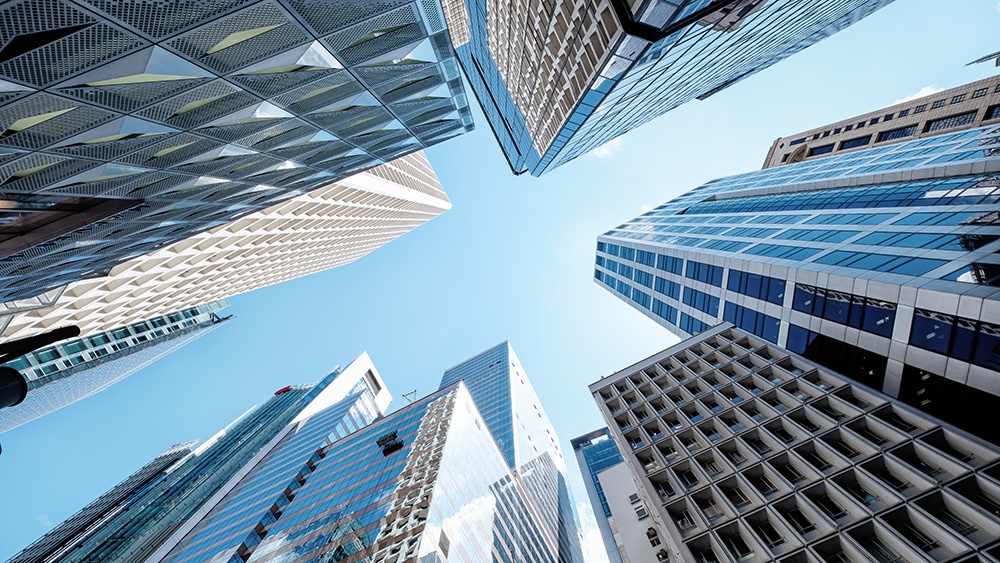
Prior to air conditioning, skyscrapers offered openable windows that people would use to circulate natural air and ventilate the space. Even then, it wasn’t about the comfort of building tenants.
Ever since the Chicago Home Insurance Building, one of the first modern skyscrapers in 1884, sealed glass-and-steel commercial spaces offer climate-controlled comfort, an important engineering feat that shaped the way society works and lives.
Architecture Cues From History
“Like the vernacular buildings that formed our early metropolises, the first skyscrapers were created with ventilation and airflow in mind,” according to a Curbed article by Patrick Sisson.
“Many of the same techniques used on more earth-bound structures were...adapted and scaled up as these new colossuses, girded by steel skeletons.”
Before air conditioners, cooling techniques were architectural adjustments like high ceilings, operable windows, extensive perimeter exposure, central open courts, and light wells in alphabet shapes to ensure cross ventilation.
These techniques were inspired by historical references to help shade, cool, and circulate air prior to the invention of A/C.
For example, the Wainwright Building in St. Louis took design cues from the Uffizi in Florence, Italy, a 17th Century administrative building. The Wainwright combined classical architecture and “a large, fixed pane surrounded by smaller sash windows” for ventilation to create a modern building with classic architectural bones.
Sanitation Over Comfort
Mechanical ventilation systems were adopted in taller buildings after its invention in the 1860s. The systems solved the health problem of “coal- and gas-powered lamps and heaters [that] quickly filled rooms with toxic smoke—and the belief that poor health was caused by” poor indoor air quality.
However, even with mechanical ventilation systems, cooling was less about comfort and more about sanitation. It was about removing humid air from workshops and other crowded spaces.
For example, the American Surety Building in New York City (built in 1896) “included a ventilation system, but only for the lower seven floors. Workers on these levels couldn’t open their windows due to the dirt, muck, and grime of the city streets.”
For a few years, attempts at indoor cooling included access to rooftop gardens and ice pipes. In 1900, the packing plant in the Armour Building of Kansas City, Missouri, “featured a spraying room, which sent air through a misting system that ‘washed’ it, cooling it just a few degrees.”
The turning point came in 1902 when Willis Carrier stumbled upon the invention of artificial refrigeration while trying to cool a printing room to prevent ink from smearing in humid temperatures.
The technology was first installed in a 38,000-square-foot mansion of a Minneapolis millionaire. However, commercial use took awhile to catch on.
Skyscrapers, like the Empire State and Chrysler buildings in New York City, still relied on natural ventilation to keep occupants cool. Even with Carrier units, building portions that were exposed to the sun received little to no relief.
The biggest change came in 1952 when The Lever Brothers company hired Gordon Bunschaft to design a futuristic office headquarters in New York City. The resulting 24-story, sea-green glass box provided total comfort for occupants.
“Employees could enter through the large ground-level plaza or underground parking garage, eat in the cafeteria, and work in an office kept cool and clean by air conditioning and mechanical ventilation,” according to the Curbed article.
“The hermetically sealed exterior cut down on heating, cooling, and cleaning costs because less city dirt and dust made its way through open windows.”
No more need to create atriums or light wells. The availability of air conditioners meant larger office floor plans and a higher work rate.
Environmental Concerns
Despite this revolutionary building design and cooling technology, society realized the negative implications that came with the windowless wall.
The “cooling of buildings in the United States contributes to half a billion metric tons of carbon dioxide emissions every year,” according to the New York Times. Not to mention, we use more air conditioning than every other country combined.
To combat this environmental effect, architects considered new cooling techniques. Today, the United States is home to some of the most sustainable buildings in the world, including the following award winners, according to National Geographic:
- Brock Environmental Center in Virginia Beach, Virginia
- Discovery Elementary School in Arlington, Virginia
- Bristol Community College in Fall River, Massachusetts
- Stanford University Central Energy Facility in Stanford, California
- Chatham University Falk School of Sustainability in Pittsburgh
- George Washington University Milken Institute School of Public Health in Washington, D.C.
- National Oceanic and Atmospheric Administration Inouye Regional Center in Oahu, Hawaii
- Hampshire College R.W. Kern Center in Amherst, Massachusetts
For more information about commercial HVAC, subscribe to our blog:


